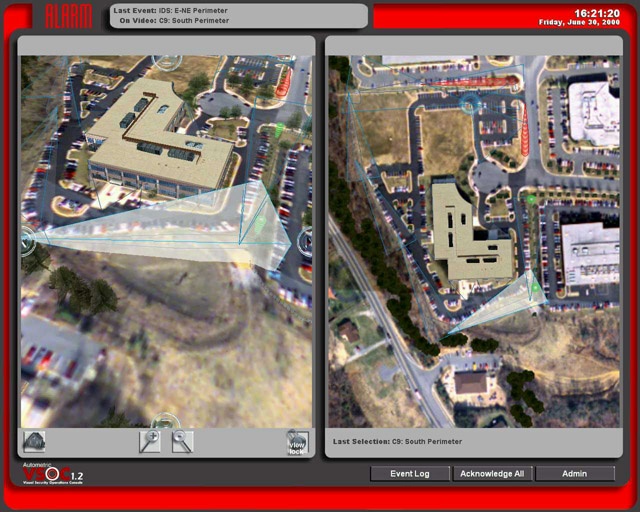 |

Submitted by , posted on 19 July 2000
|
 |

Image Description, by

This is a screenshot of the VSOC (Visual Security Operations Console) product
that I work on at Autometric, Inc. (www.autometric.com). A 3D and 2D window
allow for simple point-and-view navigation of a customer's site model.
We are able to write software plug-ins to interface with various types of
security hardware and map inputs to 3D/2D models. For instance, the red,
lobed-shaped sensors above are inputs from a microwave motion detection system.
When they are set off (as they have been before this shot was taken), a
configurable alert sound is played, the border color changes to red, the 3D
window 'flies' to a view of the sensor, and we issue a command to a video mux to
switch to a live video feed of the area in question on a separate monitor.
Actually, in this shot the user has selected the (highlighted) camera volume to
manually switch to another video feed.
The UI uses a skin technique so it is also completely customizable if the
customer has a different look in mind.
-doug (dcox@autometric.com)
|
|

